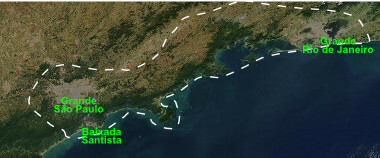Nervous tissue is made up of two main components: glial cells and neurons. Neurons are related to the propagation of the nerve impulse, being, therefore, the cells responsible for capturing and transmitting the message of other cells.
Without being stimulated, a neuron is at rest. In this situation, it is noticed that the inner surface of the membrane is more negative in relation to the surface of the outer membrane of the neuron. The electrical potential difference is approximately 70 to 90 millivolts and is called the resting potential.
The resting potential is maintained thanks to the sodium and potassium pump, which actively transports sodium ions to the outside of the neuron and potassium to the interior. Potassium quickly goes out again, due to the permeability of the membrane to this ion. This makes the membrane more positive outwardly.
Notice how the input and output of ions change the membrane potential
Do not stop now... There's more after the advertising ;)
From the moment the stimulus occurs, depolarization begins, that is, the inner surface of the membrane becomes more positive in relation to the outer one. This happens thanks to a change in membrane permeability, which causes sodium to enter the interior of the cell, changing the membrane potential. This phenomenon always occurs in small portions of the membrane, never in an entire neuron, being called the action potential. This reversal of loads occurs quickly and soon the rest state is resumed. It's called repolarization.
Changing the membrane potential will stimulate the next area, causing the action potential to propagate along the membrane. This is the nerve impulse.
For the impulse to be transmitted, the stimulus must reach a certain intensity. Otherwise, it will only cause some changes in the cell membrane, not triggering the propagation of the impulse. A stimulus strong enough to propagate an impulse is called a threshold stimulus.
By Ma. Vanessa dos Santos
Would you like to reference this text in a school or academic work? Look:
SANTOS, Vanessa Sardinha dos. "What is a nervous impulse?"; Brazil School. Available in: https://brasilescola.uol.com.br/o-que-e/biologia/o-que-e-impulso-nervoso.htm. Accessed on June 28, 2021.


